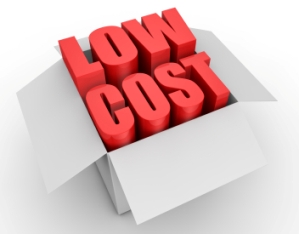 |
 |
|
|
5 Tips For Increasing Your Roth IRA Savings
When it comes to saving for retirement, your Roth IRA savings is particulary valuable. Why? Because unlike your 401k, Traditional IRA, or most other tax sheltered retirement savings accounts, withdrawals from your Roth IRA are tax-free during retirement. And while this may not sound like such a big deal, it really is. For instance, let's say you put $5,000 per year in your Roth IRA and earn a 10% annual return for 30 years. Meanwhile, your spouse puts $5,000 per year in a Traditional IRA and earns the same 10%. Thirty years later, you both have $87,247.01, but you can withdraw from your nest egg tax-free while your spouse has to pay income taxes on any withdrawals from the Traditional IRA. So while your ending balance is the same, your Roth IRA is really worth more. It costs more to max out your Roth IRA because you pay the taxes upfront, but the flipside is that you end up contributing more to your Roth IRA because it's ultimately tax-free. And your goal is to end up with as much money as possible in retirement, right? If so, here are five ways you can increase your Roth IRA savings today: 1) Max Out Your Annual Contribution
The best and most obvious way to increase your Roth IRA savings is to make sure you max out your annual contribution each year. As a general rule, the maximum annual contribution is $5,000 if you're under age 50 and $6,000 if you're age 50 or older. Also, if you're married, make sure your spouse makes the maximum contribution as well. Even if your spouse doesn't work, you can both max out your Roth IRA contributions as long as you file a joint tax return and have taxable income in excess of the amount of your Roth IRA contributions. Also, don't forget that the deadline for making a Roth IRA contribution is the same as the tax filing deadline in mid-April, not the end of the calendar year (December 31st) as you might expect. If you find yourself in late January, and you never made a Roth IRA contribution for the previous year, you still have until at least April 15th to contribute the maximum. And remember, you can't "make up" for past years when you didn't make the maximum Roth IRA contribution (or any contribution at all). If your contribution limit is $5,000 and you don't contribute at all for two years, you can't make a $15,000 contribution in year three. So make it a priority to max out your Roth IRA contribution each year. To illustrate just how important it is, take the following hypothetical scenario: Let's say you contribute $4,000 per year at 8% for 30 years, but your best friend contributes the maximum of $5,000 per year while earning the same 8% over the same time period. In retirement, you end up with $493,383.47. Not bad. But your best friend has $616,729.34. That's a $123,345.87 difference. See now why it's important to make the maximum annual contribution? 2) Lower Your Transaction CostsIf you're contributing a set amount of money to your Roth IRA each month, you should be able to avoid any transaction costs. Most online and offline brokers offer plans that enable you to dollar cost average into mutual and index funds free-of-charge. So if you're paying $7 per trade, you're probably paying $7 too much! And if you prefer to buy individual stocks, and you're still paying a commission for each individual trade, you might want to consider a broker such as Sharebuilder where you can invest regular amounts of money each month and pay a small flat fee for your trades. While trading commissions may seem like small sums of money, they add up over time. And over the course of 25 to 40 years, they can be a significant drain on your retirement savings. For example, let's say you currently contribute $416 per month to your Roth IRA, paying $7 per month to purchase shares of your favorite index fund. But that $7 per month ($84 per year) comes out of your annual $5,000 contribution, so it's money that otherwise could be invested. If you switched to a program where you can invest your $416 per month commission-free, then you could invest that extra $84 per year too. At 10% per year over 30 years, that $84 grows to $15,283.25. So pay attention to your transaction costs! 3) Lower Your Expense Ratios
If you're invested in mutual funds or index funds, you're also paying an annual expense ratio for the privilege of having someone else manage your money. Make sure your expense ratio is as low as possible. Some mutual funds will charge as much as 1.5% of your net asset value (NAV) annually, and while that might not sound like much, it too adds up to a substantial amount of money over time. For example, if you invest $10,000 at an annual rate of 10% for 40 years, you'll end up with $452,592.56. But if you invest the same amount for the same time period and earn only 9% per year, you end up with $314,094.20. That's a $138,498.36 difference! You end up with 30% less money because your money grew 1% less per year. See how important 1% is? Now, you can buy an index fund that tracks a major market index and sports a 0.07% expense ratio or you can buy a mutual fund with 1.5% expense ratio. Are you ready and willing to give up that extra 1.43% per year? Especially when there's no guarantee the mutual fund will outperform the major market indices? Lowering your Roth IRA administration costs (both your transaction fees and expense ratios) is a quick way to increase your retirement savings. Over the long-term, those small amounts adds up to a lot. 4) Convert Your Old 401kOne surefire way to increase the size of your Roth IRA savings is to convert your 401k from an old job. This is one of the items on my personal "to do" list this summer. Oftentimes when you switch jobs (which I did last summer), you forget to move your 401k because of all the paperwork and transitional tasks that come along with a new job. But odds are you can invest that money in your 401k more efficiently. Why? With a 401k, you're very limited in your investment options. To give yourself more flexibility and perhaps lower the expense ratios we just discussed, you're probably better off rolling your old 401k into a Traditional IRA where you have more control over it. Once there, you have the opportunity to perform a Roth IRA conversion. But keep in mind that a Roth conversion will most likely trigger an income tax liability on the conversion amount, so if you don't have the money to pay the taxes, it's probably not a good idea. But if you do have the money, it's a great way to bolster your Roth IRA savings. For example, let's say you have $10,000 in a 401k with your previous employer. You're in the 25% tax bracket, and you already maxed out your Roth IRA to the tune of $5,000 this year. You can easily rollover the $10,000 in your old 401k to a Traditional IRA tax-free and penalty-free. Then, assuming all your 401k contributions were made with pre-tax dollars, you can convert the $10,000 in your Traditional IRA to a Roth IRA. The conversion will trigger an income tax liability, so you'll owe $2,500 (25% x $10,000), but you'll have an additional $10,000 in your Roth IRA as a result. 5) Always Contribute, Even If You Think You Earn Too Much
Income limitations under the current IRS rules prohibit you from making a Roth IRA contribution if your income exceeds $183,000 if you're married filing jointly or $125,000 if you're filing as a single person, head of household, or you're married filing separately. However, this doesn't mean you can't still fund your Roth IRA for the year. If you earn too much to make a direct contribution to your Roth IRA, don't make the mistake of thinking you still can't max it out. Why? Because you can still make non-deductible contributions to a Traditional IRA (anyone can do this regardless of income). And once you fund your Traditional IRA with after-tax dollars, you can turn around and convert your Traditional IRA to a Roth IRA. Since anyone (regardless of income) can perform a Roth IRA conversion, you now have a fully-funded Roth IRA even though you earn too much to make a direct contribution. And since your original contributions to the Traditional IRA were made with after-tax dollars, your conversion isn't subject to income taxes. However, keep in mind that it's not so simple if you already have a Traditional IRA previously funded with tax deductible contributions. Why? Because the IRS won't allow you to convert only the recently contributed non-deductible contributions. They'll be treated as a percentage of whatever amount you choose to convert. So make sure to seek the counsel of a financial professional before you dive headfirst into such a conversion. ConclusionAll things remaining the same, a dollar in your Roth IRA is worth more than a dollar in your 401k or Traditional IRA. After all, when you go to withdraw money in your retirement years, your Roth IRA withdrawals are tax-free while your 401k and Traditional IRA withdrawals are subject to income taxes at your normal income tax rate. So if you're in the 25% income tax bracket in retirement, then a dollar in your Roth IRA is still worth a dollar, but a dollar in your 401k or Traditional IRA is really worth seventy-five cents. So do everything in your power to increase your Roth IRA savings!
Check out our new Facebook Page and follow us on Twitter!
Return to the top of 5 Tips For Increasing Your Roth IRA Savings
|
What's New?Read 5 Reasons Why I Love My Roth IRA, our part in the Good Financial Cents Roth IRA Movement! Start planning ahead for next year by checking out 2017 Roth IRA contribution limits, and stay alert to this year's changes to the 2016 Roth IRA contribution limits. Our family fully funds our Roth IRA with this website. Learn how you can do it too. Are you confused or frustrated by the stock market? Learn how to build real wealth selecting individual stocks for your Roth IRA... Read more about what's new on the Roth IRA blog. Hi, I'm Britt, and this is my wife, Jen. Welcome to our Roth IRA information website! This is our humble attempt to turn a passion for personal finance into the Web's #1 resource for Roth IRA information. But, believe it or not, this site is more than just a hobby. It's a real business that provides a stable and steady stream of income for our family. In fact, because of this site, Jen is able to be a full-time stay-at-home mom and spend more time with our daughter, Samantha. But you want to know the best part? ...You can do the same thing! Anyone with a hobby or a passion (even with no previous experience building a website) can create a profitable site that generates extra income. If you're tired of solely depending on your job(s) for family income, click here now and learn why our income is increasing despite the financial crisis and how we're making our dreams come true. |
|
Search This SiteRoth IRA BasicsMore About Roth IRAsRoth IRA ResourcesAbout Your Roth IRALike Us On FacebookFollow Us On Twitter
RSSDisclaimerThe information contained in Your Roth IRA is for general information purposes only and does not constitute professional financial advice. Please contact an independent financial professional when seeking advice regarding your specific financial situation. For more information, please consult our full Disclaimer Policy as well as our Privacy Policy. Thank YouOur family started this site as a labor of love in February 2009, a few months after our daughter was born. Thank you for helping it become one of the most visited Roth IRA information sites. Thank you, too, to the "SBI!" software that made it all possible. We hope you find what you're looking for and wish you much continued success in your retirement planning! |
||
|
| ||









